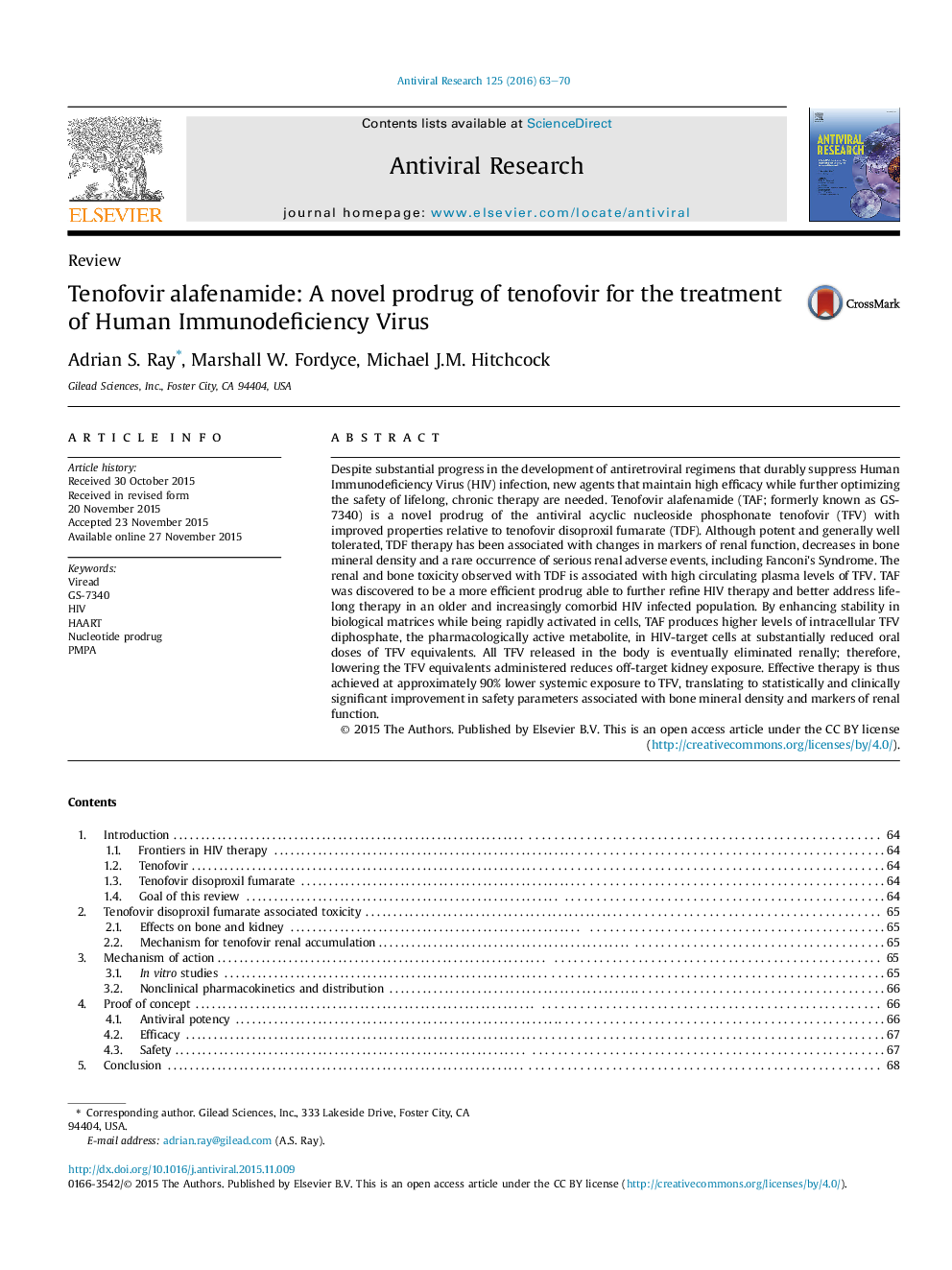| Article ID | Journal | Published Year | Pages | File Type |
|---|---|---|---|---|
| 5821983 | Antiviral Research | 2016 | 8 Pages |
â¢Once in cells, pharmacologically active tenofovir diphosphate has favorable antiviral activity, selectivity and persistence.â¢Tenofovir in parent form lacks oral bioavailability and has poor cell membrane permeability.â¢Tenofovir disoproxil fumarate is generally well tolerated clinically but is associated with effects on the kidney and bone.â¢Tenofovir alafenamide more efficiently delivers tenofovir to target cells resulting in lower plasma and kidney exposures.â¢Clinical studies have shown tenofovir alafenamide has reduced impact on markers of renal function and bone mineralization.
Despite substantial progress in the development of antiretroviral regimens that durably suppress Human Immunodeficiency Virus (HIV) infection, new agents that maintain high efficacy while further optimizing the safety of lifelong, chronic therapy are needed. Tenofovir alafenamide (TAF; formerly known as GS-7340) is a novel prodrug of the antiviral acyclic nucleoside phosphonate tenofovir (TFV) with improved properties relative to tenofovir disoproxil fumarate (TDF). Although potent and generally well tolerated, TDF therapy has been associated with changes in markers of renal function, decreases in bone mineral density and a rare occurrence of serious renal adverse events, including Fanconi's Syndrome. The renal and bone toxicity observed with TDF is associated with high circulating plasma levels of TFV. TAF was discovered to be a more efficient prodrug able to further refine HIV therapy and better address life-long therapy in an older and increasingly comorbid HIV infected population. By enhancing stability in biological matrices while being rapidly activated in cells, TAF produces higher levels of intracellular TFV diphosphate, the pharmacologically active metabolite, in HIV-target cells at substantially reduced oral doses of TFV equivalents. All TFV released in the body is eventually eliminated renally; therefore, lowering the TFV equivalents administered reduces off-target kidney exposure. Effective therapy is thus achieved at approximately 90% lower systemic exposure to TFV, translating to statistically and clinically significant improvement in safety parameters associated with bone mineral density and markers of renal function.
